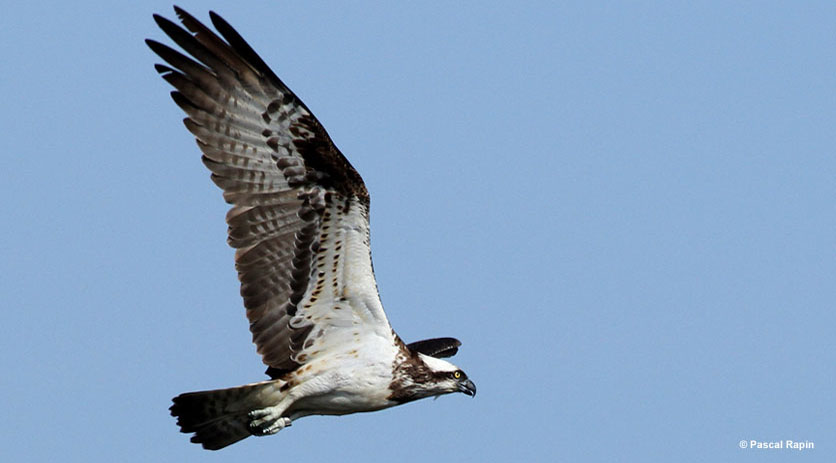 The reason that it is very unlikely (with nature you can never say impossible, but we can say very unlikely) that the Osprey will start breeding in western Switzerland again without help is due to “philopatry”. Philopatry is the tendency of an individual to stay or to return to the place where they were born in order to breed. Some species, like the Osprey, have a very strong philopatry, which results in a very limited ability to disperse to new areas. This means that when a population disappears, it is exceedingly unlikely that individuals who were not born in this area will recolonise it, even if suitable habitat exists.
The reason that it is very unlikely (with nature you can never say impossible, but we can say very unlikely) that the Osprey will start breeding in western Switzerland again without help is due to “philopatry”. Philopatry is the tendency of an individual to stay or to return to the place where they were born in order to breed. Some species, like the Osprey, have a very strong philopatry, which results in a very limited ability to disperse to new areas. This means that when a population disappears, it is exceedingly unlikely that individuals who were not born in this area will recolonise it, even if suitable habitat exists.
Male Ospreys (which are the ones that chose a territory) are particularly faithful to the area where they grew up, while females can, at times, return to breed further away, provided that they are attracted to an extremely persuasive male holding a territory. A few exceptions to this general rule have been observed, but the vast majority of breeding Ospreys always return to breed very close to where they are born, or where they think they were born.
This project is based on the fact that if chicks are “translocated”* at an age of around five to six weeks, they will imprint on the place to where they have been moved and where they will take their first flight. This technique was used successfully in the United States since the beginning of the 1980s to restore populations decimated by DDT, as well as in four European countries since the end of the 1990s.
There will always be some people who believe that it is better to “let nature take its course” and wait for the Osprey to return naturally (which has not happened in Switzerland for the last century).
The opinion of every international expert who has visited western Switzerland is that a “natural return” is extremely unlikely. If we hope to have a population of breeding Ospreys in western Switzerland we need to reintroduce birds to the area, and to complement the reintroduction by building artificial nests.
An “alternative” project based on only building artificial nests (already tested locally in Switzerland) without reintroduction would be very costly (in time and energy) and would be unlikely to work. It would also be quickly demotivating, since each year people would need to repair numerous artificial nests over many years to make them attractive to migrating birds, knowing that it would be very unlikely that an Osprey would use the nest.
There is almost no possibility that the Osprey will return to breed in Western Switzerland without our help, due to its innate philopatry. It is our fault that the Osprey has become extinct from our region, and it is our responsibility to restore this species using tried and tested methods.
* Translocation is the transfer of chicks collected from healthy populations elsewhere that are then raised in an aviary and released, where they are fed until they leave on migration.
